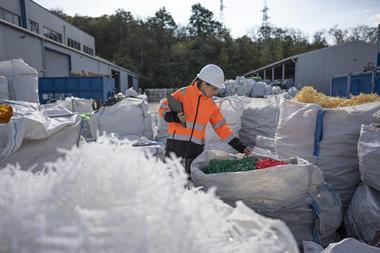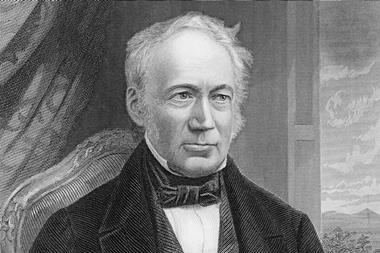From Peter Swindells
I must disagree with my former colleague Roger Lintonbon that marine organisms can provide a sink for increasing levels of carbon dioxide (Chemistry World, January 2007, p34).
Increasing the concentration of carbon dioxide does not lead to increased phytoplankton growth because it is not carbon availability that is the limiting factor on algal growth. It appears that the limiting factor is the availability of iron (see, for example, Coale et al, Nature, 1996,383, 495).
It might be possible to boost carbon dioxide uptake by phytoplankton by fertilising the oceans with iron; however, the unknown consequences of meddling with such a fundamentally important ecosystem surely urge caution.
P Swindells CChem MRSC
University of Wolverhampton, UK
From Elvin Thurston
The implication of Roger Lintonbon’s letter - that natural mechanisms of carbon sequestration are being neglected by environmental scientists in the debate about carbon emissions - is based on misinformation.
The surface zones of the oceans are already supersaturated in bicarbonate and spontaneous deposition of calcium carbonate is only prevented by the natural content of magnesium that prevents inorganic nucleation of crystals of calcite (calcium carbonate). In fact, as calcium carbonate is removed from bicarbonate, increased carbon dioxide levels have been detected above growing coral reefs.
The only natural mechanisms for long-term removal of carbon from the atmosphere are formation of coal and oil from buried organic material, and the chemical erosion of calcium-containing silicate rocks to form calcium bicarbonate and silica.
The latter process has reduced the carbon dioxide content of the atmosphere over the past 65 million years as mountain chains like the Alps and Himalayas have been formed and then eroded. This has moved the Earth from the high carbon dioxide of the greenhouse world of the Cretaceous to the relatively low carbon dioxide of the ice age world of today. Unfortunately for us neither mechanism is very fast!
This is the basis of the Geocarb model developed by Robert Berner and colleagues at Yale University, US.
E F W Thurston CChem FRSC
Norwich, UK
From Alan White
Stepping up the fight against malaria (Chemistry World, January 2007, p29) describes an endoperoxide being developed by Paul O’Neill’s team at the University of Liverpool, UK. What it fails to add is that a very similar structure, an ozonide, OZ277/RBx-11160, is just completing successful clinical trials in India by a company called Ranbaxy and may shortly be on the market.
The initial work was carried out by Jonathan Vennerstrom’s group at the University of Nebraska, US, in conjunction with several other groups. The Liverpool group may have played a part in this.
It is of interest that almost a whole copy of Nature was given up to the promise, preliminary pharmacokinetics, testing methods and chemistry of OZ277 (Nature, 2004, 430, 7002). [Education in Chemistry also published a feature entitled Artemisinin and a new generation of antimalarial drugs in July 2006, p97] Since malaria is still a major source of mortality, a longer article on the development and promise of new drugs derived from the artemisinin molecule would have been justified.
A White CChem FRSC
By email
From James Hartley
Cheddar cheese production is reported to be threatened following the EU ban on the use of methyl bromide as a fumigant. Of course this may be a media scare story. If not, the following may be of interest. As a lab boy in the 1940s, I was responsible for the acetone recovery on a cellulose acetate film casting unit. The solvent was drawn into cylinders containing active charcoal. The charcoal cylinder was then flushed with steam and the condensate was distilled.
Since the total UK usage of methyl bromide for cheese making is said to be one to two tonnes, recovery should be easy using the above method. Alternatively, disposable charcoal filters could be used. They could then be used as fuel in cement kilns.
J H Hartley MRSC
Walton on Thames, UK
From Fenton Heirtzler
I was not impressed by the slant put forward by Craig Fleming in his article concerning age discrimination (Chemistry World, October 2006, p36). Younger professionals at a disadvantage because they do not have skills? How about the +40 crowd who have the skills but who are considered to be ’over-qualified’, or ’a little too old to be competing against those fresh out of graduate school’. A younger person can acquire those missing skills. What can an older one do? Get a face lift or go for botox treatment?
F Heirtzler
By email
From Peter Nelson
I was surprised to read that hydrogen can be hexavalent (Chemistry World, January 2007, p23). The reference is to a hydrogen atom substituted into a magnesium oxide lattice where it is bound to six magnesium atoms. However, this only makes it hexacoordinate, as in crystalline lithium hydride.
P G Nelson MRSC
Hull, UK
Ed: The term hexavalent crept in as an editing error. Chris Van de Walle, whose work is described in the piece, agrees that hexacoordinate would be a more appropriate term. ’However, the term does not capture the interesting physics of the multicentre bond,’ he says. ’H in LiH is also hexacoordinate, since LiH crystallises in the rocksalt structure with each H surrounded by 6 Li. However, in LiH the oxidation state of H is -1 (you could say that H is monovalent), and no covalent bonds are formed.
’The character of the bonding of H in MgO is very different. In MgO, the bonding state that characterises the multicentre bond contains only two electrons. These two electrons are shared by H and
the six nearest-neighbour Mg atoms.
’This bonding state can be explained within the context of covalent bonding, and should not be interpreted as ’’six equally shared bonds’’; it really is just one bond (with two electrons) with a very special character, namely that it is shared between the atom at the centre and the six surrounding Mg atoms, a multicentre bond.’
From John Sandalls
Can someone please tell me why so many people use the word methodology when they really mean method?
J Sandalls CChem FRSC
Wantage, UK
From John Walker
In the pipeline looked at the torcetrapib debacle (Chemistry World, January 2007, p16). The article misses the key point of this disaster, namely that the fundamental rule of any trial - only change one variable at a time - was broken. Pfizer had good phase II data showing that 90mg torcetrapib per day increased HDL [good] cholesterol by 67 per cent and reduced LDL cholesterol by 15 per cent. The trial also looked at combinations of torcetrapib and atorvastatin (Lipitor): overall the effect was to increase HDL cholesterol by 72 per cent and decrease LDL cholesterol by 60 per cent.
One can appreciate that a gung-ho marketing person would press for a phase III trial of the combination treatment but it beggars belief that a scientist would do so. Pfizer, and possibly the rest of us, have paid the price for this botched trial which clearly demonstrated the dangers of the combination treatment but which was unable to demonstrate the benefits/risks of torcetrapib monotherapy.
J Walker
Stamford, UK
From Ronald Dell
Why does potassium chloride taste so revolting compared with sodium chloride when both cations are essential to life?
Also, why is magnesium, in the form of sulfate or citrate solution, such a powerful and quick acting laxative?
R M Dell CChem FRSC
Abingdon, UK












No comments yet